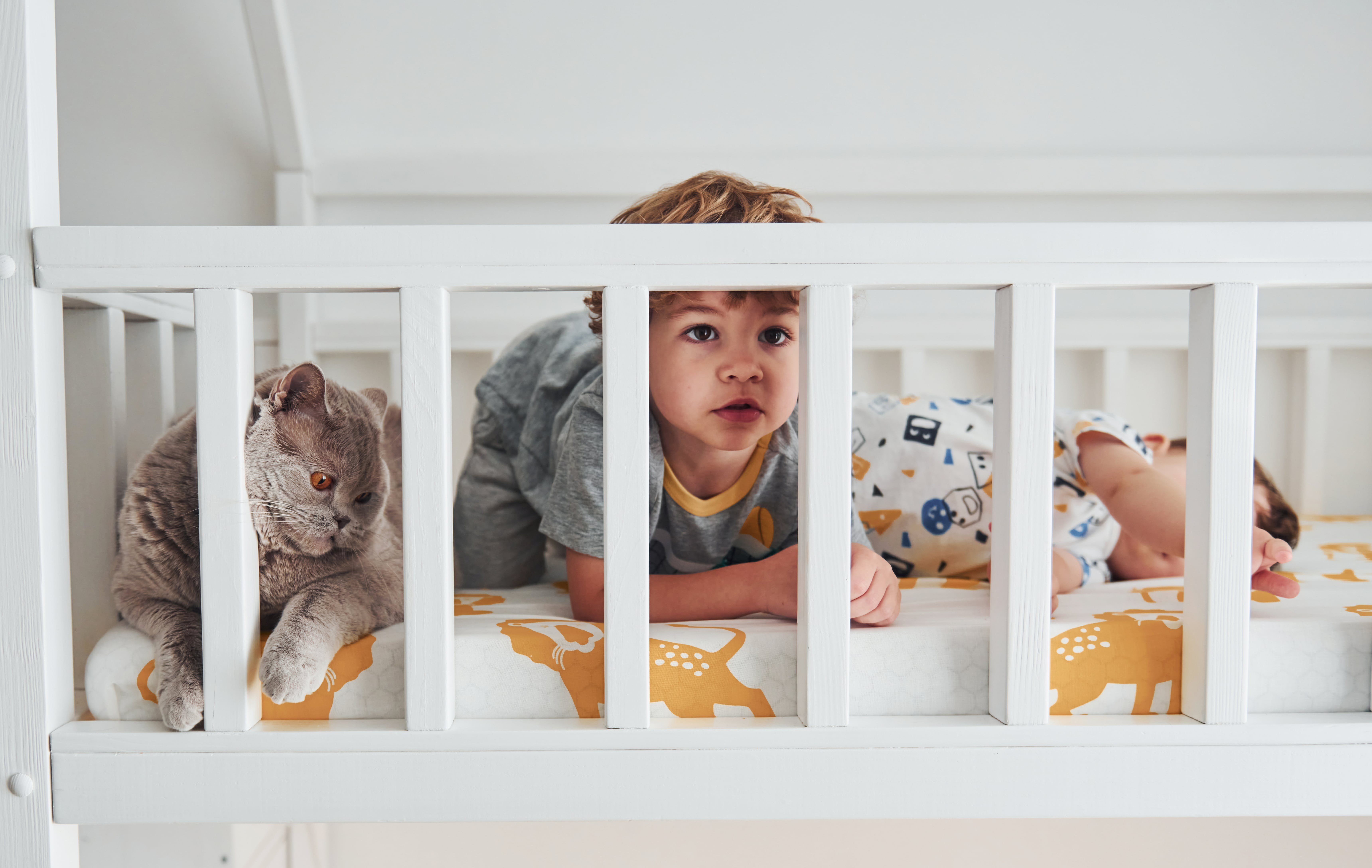Bedside Cosleeper
A bedside cosleeper is a bassinet that attaches to the side of your adult bed. If you stick to the CSPC guidelines for sleeping areas for infants, it's safe.
These guidelines are similar to the crib bedding standards. Read more about the guidelines here. The most important features to consider when selecting the best bedside sleeper are Safety, Comfort, and Convenience.
Safety
Many new parents and pregnant mothers have chosen to cosleep which is also known as bed-sharing, as per the American Academy of Pediatrics recommendation that infants be in the same room as their parents. The Academy notes that room-sharing is more secure than sleeping with a baby in the same bed since it lowers the chance of Sudden Unexpected Death in Infants, or SIDS. The AAP doesn't recommend bed sharing but it does recommend that co-sleeping on a separate sleeping surface is a good way to decrease the risk of SIDS. This is the reason why the creation of the bedside cosleeper was crucial for many families.
A bedside cosleeper attaches to a bed frame for adults. It is a crib like sleeper. The bedside cosleeper helps parents monitor the baby and gives the baby the ability to sleep in their own bed. The most reliable cosleepers meet strict safety standards and are built using durable, high-quality materials. Check for the Juvenile Products Manufacturers Association (JPMA) stamp of approval, which confirms rigorous product testing and quality control to ensure your child's safe cosleeping experience.
The safety of a crib is contingent on a variety of factors. This includes how it's set up and secured to the parent's mattress. If the bedside sleeper is not connected to the bed of the parent in a manner that eliminates the gaps and spaces in which an infant can become trapped, it could be an hazard of suffocation. It is essential that the attachment system used for the bedside sleeper be tested to ensure that it can withstand any forces that are applied to it during use, like the parent rolling on and off the sleeper. horizontal force applied to the attachment system or corners of the bedside cosleeper.
The standard for bedside sleepers incorporates by reference the federal consumer safety standard for bassinets and cradles (16 CFR part 1218) that includes requirements for performance for fabric-sided enclosed openings. The mandatory requirements in the standard also address head and neck entrapment hazards by requiring that, following the application and release of a 50-lb. The standard also stipulates that following the release and application of 50-lb. It is not permitted to create a gap larger than 1.0 in. Read-only copies of the standard can be obtained from ASTM's electronic Reading Room.
Convenience
Many parents have resisted cosleeping due to fear of suffocation, SIDS or the "Ferberization" process that requires children to be in a room by themselves Anthropologists have noted that the majority of mammals and primates and people who live in non-Western societies, have regularly coslept. This could be due to the fact that infants are calmed by the familiar voice of their mother and it can also help to practice self-soothing.
The top bedside sleepers have an innovative design that is attached to the sides of any mattress and swivels so you can easily access it to change diapers or feeds in the middle of the night. Find a model with adjustable feet, which retract to accommodate various mattress sizes. It should also have an ample storage area to store all the baby's necessities.
Choose a bedside sleeper that will fit standard crib bedding, so it will be safe to use as your child grows. Consider a model that is convertible and can be used as a play yard or a bassinet that is deeper. bedside crib to cot will last for a long time.
Portability

Depending on the size of your bedroom, a bedside sleeping system with wheels and/or a lightweight base might be easier to move around the house than one with frames made of wood or a large base. The babybay bedside sleeper, HALO bassiNest essencetia, and Snoo Smart Sleeper are all movable. They come with feet that can be adjusted that retract to fit platforms; legs that fold inward to allow maximum proximity to the mattress; 100 mesh sidewalls that allow airflow without covering baby's nose or mouth.
The Arm's Reach ClearVue is a top option. It adjusts in 1" increments and can be used as a bassinet, or a portable bed. It also swivels, allowing easy access to your baby so that you can soothe, nurse or check on her throughout the night.
